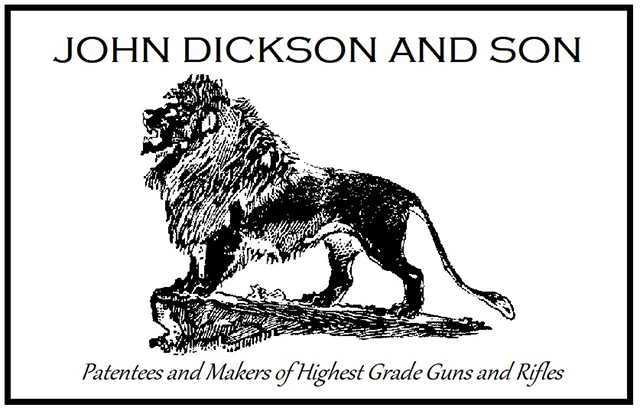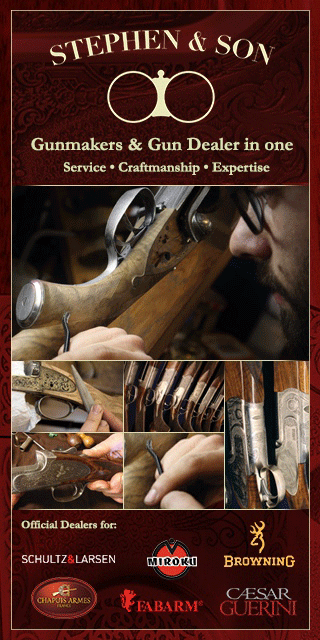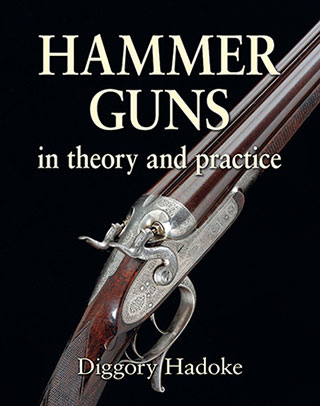I have to reality-check myself occasionally, when I find I’m lamenting the state of an old gun. Really, I should marvel that any have survived in-tact at all.
Just such an event happened a week or two ago, when a local man brought me a Purdey hammer gun he hoped may be worth some money. As it turned out, I did buy a nice boxlock pigeon gun from him but his prize Purdey was barely a gun at all anymore. It was perhaps the worst I have ever seen. Every part of it was broken, rusted, worn-smooth, bent, dented or twisted. It was, literally, worthless.
Of the tens of thousands of best guns made between 1850 and 1950, probably only a small percentage survive. My racks still have one or two forlorn slots occupied by guns I have not been able to restore but which I cannot bring myself to scrap. Between them, they ably demonstrate the tribulations suffered over the years by so many of the masterpieces sold from the finest London showrooms in the heyday of the bench-made, bespoke, sporting gun.

One example is by Stephen Grant, perhaps my favourite maker of hammer guns. It is a Hodges patent back-lock, side-lever 12-bore; the best known of Grant’s hammer gun styles. Time has not been kind. Overall it is dirty, scratched, dented and devoid of all original finish. The chequer to hand and forend has gone completely. The Damascus barrels retain some of the black paint that was used the last time somebody tried to ‘restore’ the gun.
The bores are pitted but the most shocking repair is the apparent soldering-on of three metal patches, where there must have been holes in the walls. I can only assume that someone did this with the intention of shooting it afterwards. I suspect he may have done so, as the finish over the repair is worn.

It is of-course, off-face by a huge margin. One hammer is a badly matched replacement. The stock, though not cracked, is very worn and the oval has been gouged out, presumably for its perceived silver or gold value.
Hammer guns often fell foul of new inventions and trends, starting life with the boss, then being handed to a game-keeper when the boss bought a new hammerless ejector, then, in turn to the gardener, each hand-down giving the old guns a harder life and less rigorous maintenance regimen, until they were completely worn-out.

This old Grant, dating from the late 1870s, is beyond repair. The woodwork could, perhaps, be made acceptable but wear to the metal parts is too great to make it worthwhile and the coup-de-grace is the state of the barrels. They could be sleeved but it would be a fool’s errand. The resulting finished gun would have cost multiples of any sale value it would then have.
The second in the rack is by an ‘unknown’ maker - R.H Mitchell. The lettering on the locks is crisp and clear but that on the rib has worn smooth and is indecipherable. A search of Nigel Brown’s three volumes of ‘British Gunmakers’ reveals three or four Mitchells but none by the name ‘R. H.’

The gun, a 12-bore, is of beautiful quality. The non-rebounding bar-locks suggest late 1860s or very early 1870s. Surprisingly, the action and locks are in very good condition, not worn smooth or polished as one might expect. The guard lever retains some original colour and the breech pin lines up straight and does not have the enlarged slot of oft-worked old guns.
The oval in the stock is gold and the fine scroll engraving of good quality and full coverage. The stock itself is fashioned from a very pretty piece of French walnut and has a nicely engraved and blued steel butt-plate.
Incongruously, given the good general state of the metal work, the wood is badly worn. All chequer has been rubbed off the forend and the hand. One drop point is still visible, the other is just a shadow.

Removing the wedge-retained forend, reveals original case colours on the iron and a clean breech-face and bar flats. Proof marks are original, 1868, London.
Dropping out the locks, I note they still sit tightly, the inletting is clean and still looks as fresh as the day it was cut. The locks are best quality and also look bright and sharp, with just a little surface rust and a lot of dried-on grease and dirt.
Unfortunately, the chambers are badly pitted and the bores too. The barrels are beyond repair and sleeving would be the only option. Sleeving steel-to-Damascus is never 100% satisfactory and much of the gun’s character is lost when the Damascus is scrapped. The badly-worn forend wood is also an expensive fix. This just won’t work as a restoration. So, reluctantly, it goes back on in the rack.

Occasionally, I surprise myself, having formed an impression of a gun, put it in the rack as a lost-cause, only to re-evaluate later and decide it is a project I can make work.
This happened with a nice Charles Boswell recently. That one is due back from the workshop soon, so it may feature in these pages once finished, If I like the results.
Published by Vintage Guns Ltd on



